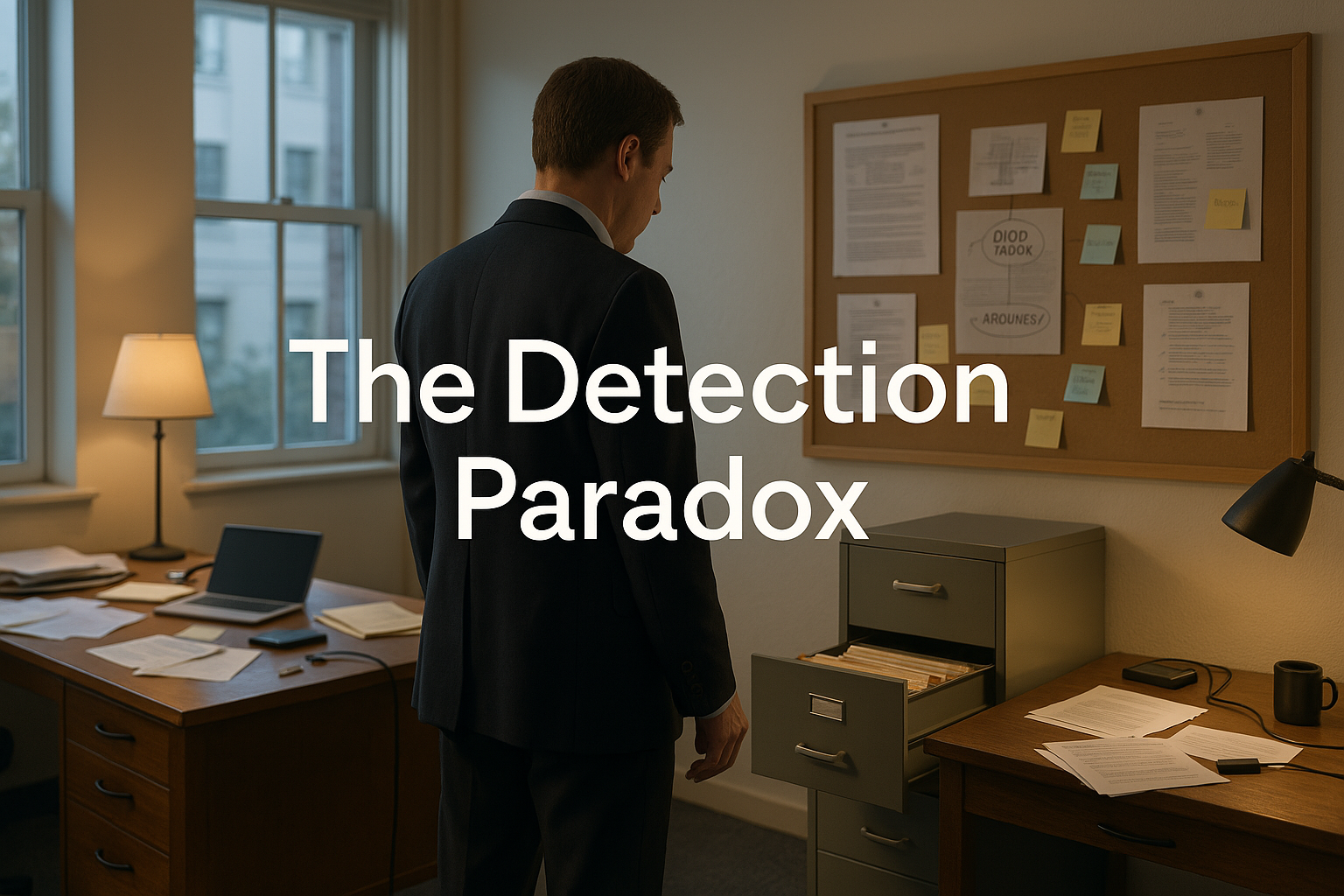The GDPR Detection Paradox
Can organizations truly manage what they can't see? This question defines the essence of the Detection Paradox under the GDPR. While the regulation demands complete control over personal data, the process of locating that data—especially hidden or shadow data—often requires intricate detection systems that may themselves introduce privacy and operational risks.
Shadow data can reside in legacy systems, forgotten file repositories, outdated formats, or misconfigured cloud environments. It typically lies outside routine data governance and is often unknown to those responsible for managing privacy compliance. Yet the GDPR mandates full visibility, setting the stage for a paradox: complex tools are required to fulfill a principle designed for simplicity and transparency.
What Is the Detection Paradox?
The Detection Paradox emerges from the contradiction between GDPR’s strict requirements for data awareness and the complexity of the tools needed to meet them. The regulation expects organizations to know what personal data they hold, where it lives, and how it's used. However, uncovering hidden or unmanaged data often involves deploying sophisticated systems—such as AI-powered scanners, automated indexing tools, or deep system crawlers.
These tools, while effective, can inadvertently introduce new risks. In the process of detection, organizations may temporarily process additional personal data, breach purpose limitations, or generate false positives that disrupt business operations. Worse, the tools might fail to detect nuanced or poorly labeled data, creating a false sense of compliance.
Shadow data often appears in unstructured formats—think old email inboxes, internal file shares, or archived PDFs—and these are particularly hard to scan with precision. The broader and more decentralized the system, the greater the challenge of finding everything required by law.
Why the Detection Paradox Matters for GDPR Compliance
Under Articles 5 and 24 of the GDPR, organizations are expected to maintain accurate, up-to-date knowledge of personal data and to implement appropriate technical and organizational measures. This knowledge isn't optional—it’s the foundation for executing key rights like data access (Article 15) and erasure (Article 17).
If personal data remains hidden, organizations may unknowingly retain it beyond its lawful purpose or fail to include it in subject access responses. This undermines data minimization, transparency, and accountability—the cornerstones of GDPR. Simply put, if detection is incomplete, compliance is too.
Moreover, privacy regulators increasingly view data visibility as a threshold issue. Demonstrating control over personal data isn’t just about having policies in place—it’s about proving, with evidence, that the organization knows what data it holds and where it resides. Without robust detection practices, that proof quickly evaporates.
Technical and Legal Tensions in Data Discovery
Manual audits—long the default in smaller organizations—are largely ineffective in today’s sprawling IT ecosystems. They require too much time, miss too much nuance, and often rely on outdated assumptions about where personal data might be stored.
Automated tools offer broader coverage but introduce new concerns. Many scanning systems lack context-awareness, leading to incorrect classification of data or accidental inclusion of irrelevant information. Some tools may even create additional data trails, like scan logs or index files, which themselves fall under GDPR’s scope.
This creates a compliance Catch-22: the very systems designed to improve transparency may inadvertently complicate it. Adding to the challenge, deploying these tools often requires cross-functional collaboration between IT, security, and privacy teams—efforts that can be slowed down by budget limitations or organizational silos.
Practical Strategies for Navigating the Paradox
Successfully addressing the Detection Paradox requires a balanced approach. Rather than relying solely on complex automation or manual efforts, organizations should integrate layered detection strategies that align with both risk level and business scale.
AI-powered discovery tools are increasingly essential, but they should be configured with privacy safeguards—such as limited data retention, access controls, and purpose limitation settings. These tools should not replace human oversight; rather, their findings must be validated through sample reviews or cross-checks to ensure accuracy.
Continuous monitoring should replace one-off audits. Detection must be seen as an ongoing function of data governance, not a compliance checkbox. Establishing clear internal policies around detection scope, frequency, and tool selection helps build accountability and consistency over time.
In parallel, organizations should adopt standardized classification frameworks across departments to ensure data is consistently labeled, stored, and retrieved. This creates a foundation for more effective detection and reduces the burden on automated systems.
What Regulators Expect
Data protection authorities do not expect organizations to achieve perfection, but they do expect proportional and documented effort. This includes showing how detection tools were selected, why certain methods were chosen, and what safeguards are in place to mitigate any new risks introduced by those tools.
Risk-based reasoning plays a key role here. Large-scale enterprises or companies processing sensitive data will be held to a higher standard than small firms with limited exposure. Regardless of size, however, all organizations should maintain evidence of their detection processes, including audit logs, policy documents, and detection-related training.
Several regulators have emphasized that ignorance of shadow data is not a valid defense. Where failures occur, lack of detection capability is often seen as a sign of poor governance—especially if data subjects are affected by breaches or delays in fulfilling access or erasure requests.
Building Sustainable Detection Capabilities
Solving the Detection Paradox requires a cultural and architectural shift. Organizations must embed detection into the design of new systems, making visibility a default feature rather than a bolt-on. This concept—often called “privacy observability”—helps teams track how data moves and evolves over time.
Training is also crucial. Employees across departments should be equipped to recognize where shadow data might arise and how to escalate concerns. Detection is not just a technical task; it's a shared organizational responsibility.
Finally, detection efforts should align with broader governance goals. When integrated with risk management, procurement, and IT lifecycle policies, detection becomes more sustainable, consistent, and effective.
From Complexity to Control
The Detection Paradox reveals that GDPR compliance is not just about knowing the rules—it's about having the tools and discipline to apply them effectively. While the complexity of detecting shadow data can feel overwhelming, it’s not an excuse for inaction.
With thoughtful investment, clear strategy, and cross-functional collaboration, organizations can improve visibility without sacrificing privacy. The key is balance: using sophisticated tools responsibly and always with the goal of enabling—rather than undermining—compliance.



